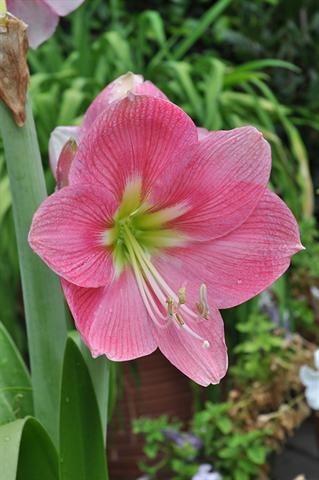One of the easiest and most rewarding bulbs to grow, amaryllis produce showy, trumpet-shaped blooms that add a flamboyant touch to your garden or home
READ MORE: 10 Roses we know you’ll love
The brilliant flowers of amaryllis may demand attention, but when it comes to growing them, these plants are as laid-back as their true name ‘hippy’ Hippeastrum hybrids suggests – all you have to do is plant the bulbs, water them and sit back and wait.
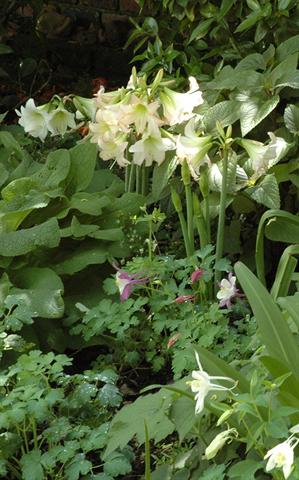
Originally hailing from hot, tropical central and southern America, amaryllis need warmth to perform well, in which case they’ll prove to be generous summer flowerers. Within about six weeks of planting, they’ll produce a tall flower spike with three to five large, trumpet-shaped blooms. Then, as these fade, another flower spike will appear. What’s more if you take care of them, they will continue to flower for years as their bulbs have a surprisingly long lifespan.
READ MORE: 46 Water-Wise plants for your garden
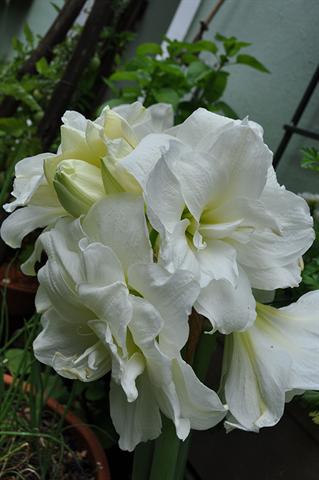
Perfect for pots, amaryllis also make excellent border plants and can be planted in groups in a warm but not hot, semi-shady spot in the garden.
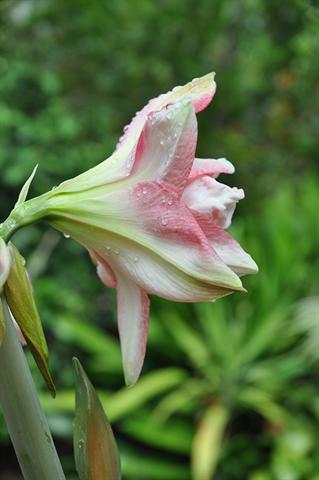
BUYING BULBS
Hadeco is the main supplier of a wide selection of Hippeastrum hybrid bulbs. These plants range in size from 30–50cm high. The size of their flowers, which may be single or double, also varies from dainty ‘Solo’s’ blooms, which have a 6cm diameter, to those of bold ‘Symphony’, which measure 16cm across. Colours include shades of red, white, lemon and pink; many have contrasting markings.
READ MORE: 6 Flowering trees we love
Buy firm, ‘dormant’, mildew-free, undamaged bulbs from August to November and plant them before they start sprouting. To manipulate the flowering time for a special occasion or for a continuous display, buy your bulbs early in the season and delay sprouting by immediately placing them in the bottom of the fridge to retard their growth. Store in paper bags (not plastic) as the net bags are messy. Once removed from the cold, they will start growing again and will flower 5–6 weeks after being planted. For flowers at Christmas, plant your bulbs in the first week of November. Note: this only works for bulbs which have not yet started sprouting.
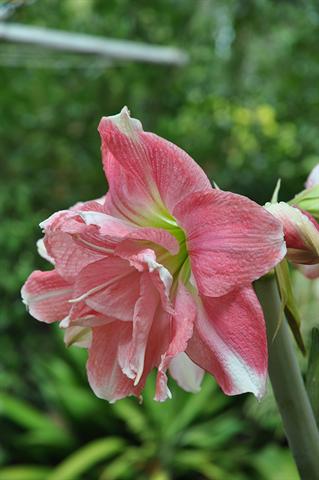
PLANTING IN POTS
Plant individual bulbs in smallish, 15–25cm diameter pots, group several together in a larger container or even line them up in a trough; space the bulbs 20–30cm apart.
Use a good-quality, free-draining potting or soil mix. Hadeco recommends a mix of 2/3 potting soil and 1/3 sand with a pH of 6–6,8; they also recommend you avoid fresh manure and pine bark. Make sure the drainage holes in the container don’t become blocked and never let the container sit in water as wet soil inhibits root growth.
READ MORE: Tips for growing veggies in pots
To plant your bulbs, hold them above the container with the roots spread out. Gradually dribble in the soil mix so that the neck and shoulders of the bulb are above the soil. Firm down and water sparingly. Once new growth is noticed, water again with tepid water and keep the soil just moist.
To cover the soil of indoor containers, use pebbles, moss or a shade-tolerant groundcover. Grow cascading groundcovers, seasonal annuals or grass-like plants among those in containers outdoors. Place the pot in a warm, but not hot, semi-shady position. Too little light will result in elongated leaves and may lead to a failure to flower the following year.
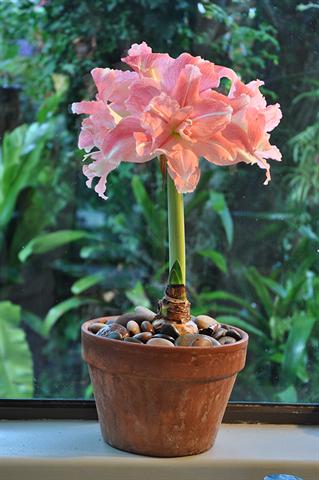
POST-FLOWERING CARE
To ensure flowering in subsequent years:
Remove each flower as it fades. Feed fortnightly with a little bulb fertiliser or a slow-release pot plant food. At the end of summer, water less frequently and allow the bulb to enter a dormant period; the leaves will yellow and die back.
READ MORE: 5 Ways to make your own fertiliser
Bulbs grown in the garden can be left in the soil while dormant provided it is free draining and temperatures don’t drop below freezing in winter.
For those in small containers, lay the pots on their sides for three months to allow the bulbs to rest. Lift the bulbs in spring, wash off the old soil and repot them. If you have several bulbs growing in one container, you can simply remove some of the soil and add fresh potting mix. That said, if the bulbs are over-crowded, rather repot them in a larger container.
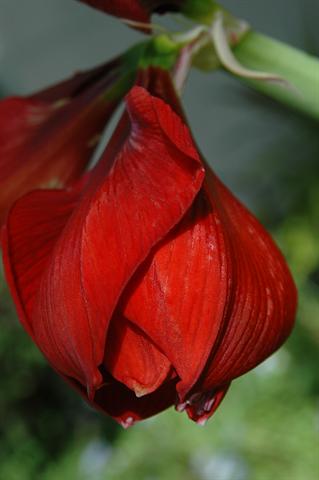
TROUBLESHOOTING
Long stems and flower heads that fall over could be the result of the plant not getting enough light, being overwatered or being exposed to temperatures that are too low. Next year, place your potted amaryllis in a sunnier, warmer position, hold back on water and try rotating the container every few days.
Hand-pick and destroy snails and slugs as well as the black and yellow amaryllis caterpillar or lily borer which eats the leaves and bores down into the bulb.
Red blotches on the leaves are caused by fungi known as Stagonospora curtisii. Try cutting off the affected part of the leaf as soon as you spot signs of this disease.
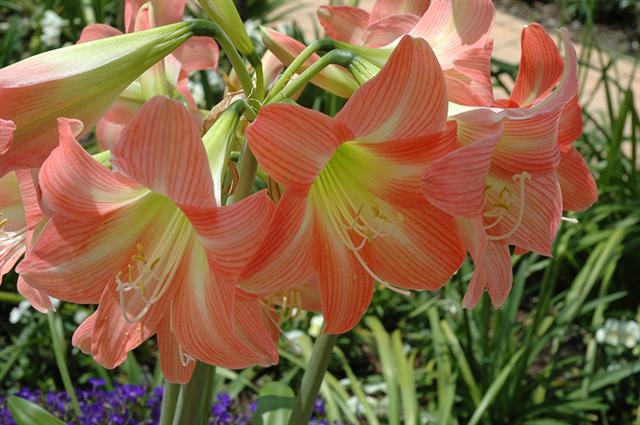
WHAT’S IN A NAME?
Don’t confuse our beautiful, indigenous March lily, Amaryllis belladonna, with Hippeastrum hybrids. Although they share the same name, and both belong to the Amaryllidaceae family, they require different growing conditions and flower at different times of year.
The name Hippeastrum means ‘horseman’s star’. It’s thought that this could be because of the flower’s similarity to a medieval spiked club, known as a morning star, which was used by horsemen.
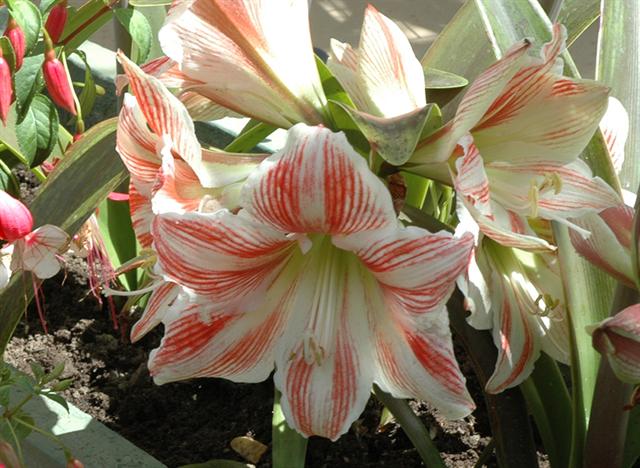
GROW YOUR OWN
Divide and replant over-crowded bulbs in spring. To propagate an amaryllis, allow the plant to go to seed; harvest in autumn and sow in spring. Viable seed may not be produced on some hybrids, but if it is, the offspring won’t necessarily be the same as the parent – but seeing what you land up with could be fun.
